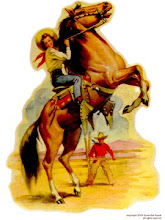
Annual Fee
A yearly fee charged by some credit cards for use of their card.
Yes, sad as it may seem some credit cards charge an annual(yearly) fee. Each may be a different fee or in terms of 6 months, but most charge by the year. Fees can range from $25 and up. Try looking for a credit card that charges NO yearly fee.
APR (Annual Percentage Rate)
A periodic percentage rate that determines the finance charges you pay on your account. Not all credit cards charge an APR. The finance charge or interest on your credit card billing statement is conveyed two ways – as a periodic rate (monthly or daily) and as the annual percentage rate. To calculate your monthly rate you simply divide your annual percentage rate by 12. For example:
18% divided by 12 equals 1.5%.
To calculate the monthly finance charge using a monthly periodic rate, multiply the Average Daily Balance x Monthly Periodic Rate = Monthly Finance Charge.
For example, if $200 is your account balance then: $200 x 1.5% = $3.00.
Some cards have a daily periodic rate. To get the daily periodic rate, you divide the APR by the number of days in the year (365).
For example, 18% divided by 365 days in the year equals .05%.
Look for a credit card that does NOT charge an APR.
Balance Transfer
Moving an unpaid balance from one open credit account to another.
You will save money if you transfer balances to a credit account with a lower interest rate. You may want to take advantage of the NO FEE transfer, NO INTEREST for X amount of months to pay off your high interest cards. See this post Stop Paying Credit Card Interest
Billing Cycle
The length of time between your statements.
Most billing cycles are approximately one month in length, or 28 to 30 days
Card-member Agreement
A written document that provides details of your agreement with the credit card issuer.
This should be read and understood before you use any credit card. If you do not agree with their terms, send the credit card back and explain why you do not want to use their services.
Cash Advance
Using your credit card to get cash from a bank, ATM, or by writing a convenience check.
Typically, the card issuer charges a cash advance fee for the transaction and begins charging interest immediately.
Avoid this if at all possible. Check to see if you can borrow needed money from your bank or a friend at a lower interest rate.
Charge Card
A specific kind of card that requires full payment of your balance with each billing cycle.
Typically charge cards do not charge interest, but late fees can apply if full payment is not received by the due date.
CID (Card Identification Number)
The CID is the three-digit number at the far right on the back of your credit card, it is also called a card verification code number.
Merchants may ask for the CID to verify that you have the card in your possession at the time you make a transaction. When using a Secure Online Account Number, please use the three-digit CID generated for that secure account number.
Credit Limit
The maximum amount that you can charge on your credit card.
Credit Report
A report about your credit history that lenders (credit card companies, mortgage companies, loan agents,etc.) consult to determine if and how much money they should lend to you.
This is your history of making timely payments, any outstanding debt and open lines of credit which are all shown on your credit report.
Your credit report is available from credit bureaus such as Equifax, Experian and TransUnion. You can get 1 free report yearly. You will get points deducted from your credit score for each inquiry made into your report. So when looking to purchase any high priced item such as a car take your report with you and tell them you are only looking and ask them to NOT make an inquiry until you have decided on which car you want. If they refuse to take your report go somewhere else...There is always another dealership just down the road who will deal on your terms.
Debit Card
A card issued by a bank that directly accesses available funds from a bank account, typically a savings or checking account.
But remember there is a charge if you spend more than what is in your account or you may get turned down on your purchase right then and there. To avoid an overdraft check to see how much you have in your account. Remember it takes 3 to 5 days for a check that is deposited into your account to clear so that money wont be spendable until then.
Default
When a customer doesn’t make a required payment to a credit card account, or otherwise violates the terms of the agreement between the credit card company and the customer.
This will cause another fee to be added to your card along with interest. Call your Credit Card supplier(or bank) if you can not make your minimum payment. Most suppliers or banks will try to work something out that will be better for you and your budget.
Finance Charges
Certain charges that can be incurred when using a credit card.
Finance charges include interest costs.
Grace Period
A period of days between the transaction date and the billing date when a transaction can be paid off without incurring an interest charge.
Interest Rate
The rate at which a credit card company or other lender charges a customer for “borrowing” money.
It is a percentage of the amount borrowed.
Your credit card is like a loan company they lend you the money to purchase an item then charge you a monthly interest on the unpaid balance. So paying it off as fast as you can saves you money, otherwise that $100 item may end up costing you $400 or more. It may be time to do a NO FEE, INTREST FREE transfer. See post at How to Stop Paying Credit Card Interest
Introductory Rate
A lower APR provided by a credit card company for a limited period of time.
Be sure to read the terms of agreement. This may sound great today but have dire consequences tomorrow.
Late Payment Fee
A fee charged when a payment has not been received by the specified due date.
Minimum Payment
The smallest payment a customer can make each statement period to keep the account in good standing.
This amount is how the credit card issuers keep you in debt.
If at all possible pay more than the minimum payment to get the balance paid off faster. Less interest paid means more money saved to you.
Penalty Rate
A higher APR the credit card company charges after the customer has made late payments, exceeded their credit limit, or otherwise did not abide by the Card-member Agreement. Eventually your interest, plus your penalty, plus your monthly payment will get so high you will owe more than what your payments can cover and instead of going down, more will be added and your balance will increase every month. Avoid having a penalty rate added to your account even if you have to sell something or get a small loan to avoid this penalty rate. This will go on your credit report.
PIN (Personal Identification Number)
A security code that the customer uses with debit and credit cards to authorize transactions such as cash advances. This PIN is different from the user ID and password customers use to access account information online.
Pre-Approved
A potential customer who has passed an initial credit bureau evaluation.
Prime Rate
An index rate that determines the interest rate a bank will charge customers. It is one way that a credit card company determines APRs.
Zero Balance
When your billing statement shows no outstanding balance and no new charges have been incurred.
Just because you no longer owe a balance, don't close the account.
This will help raise your credit score. You should keep any open account active by making a few charges each month. The secret to getting and keeping a high credit score is to make sure you pay the balance before they can add any interest. So use your credit cards responsibly and learn how to make money when you use them. Isn't it time you got paid for using their services? Read the article below to find out how.



No comments:
Post a Comment